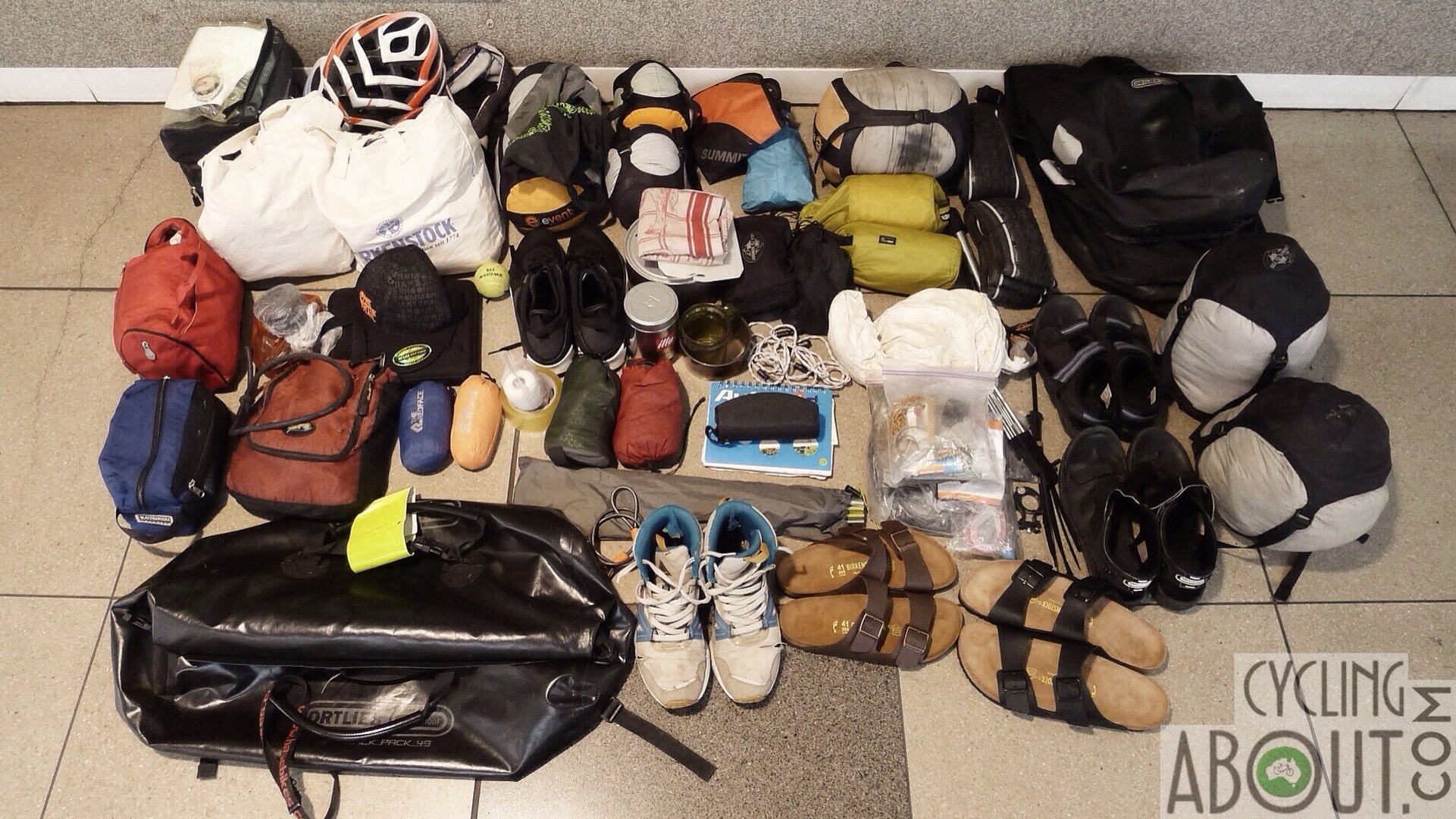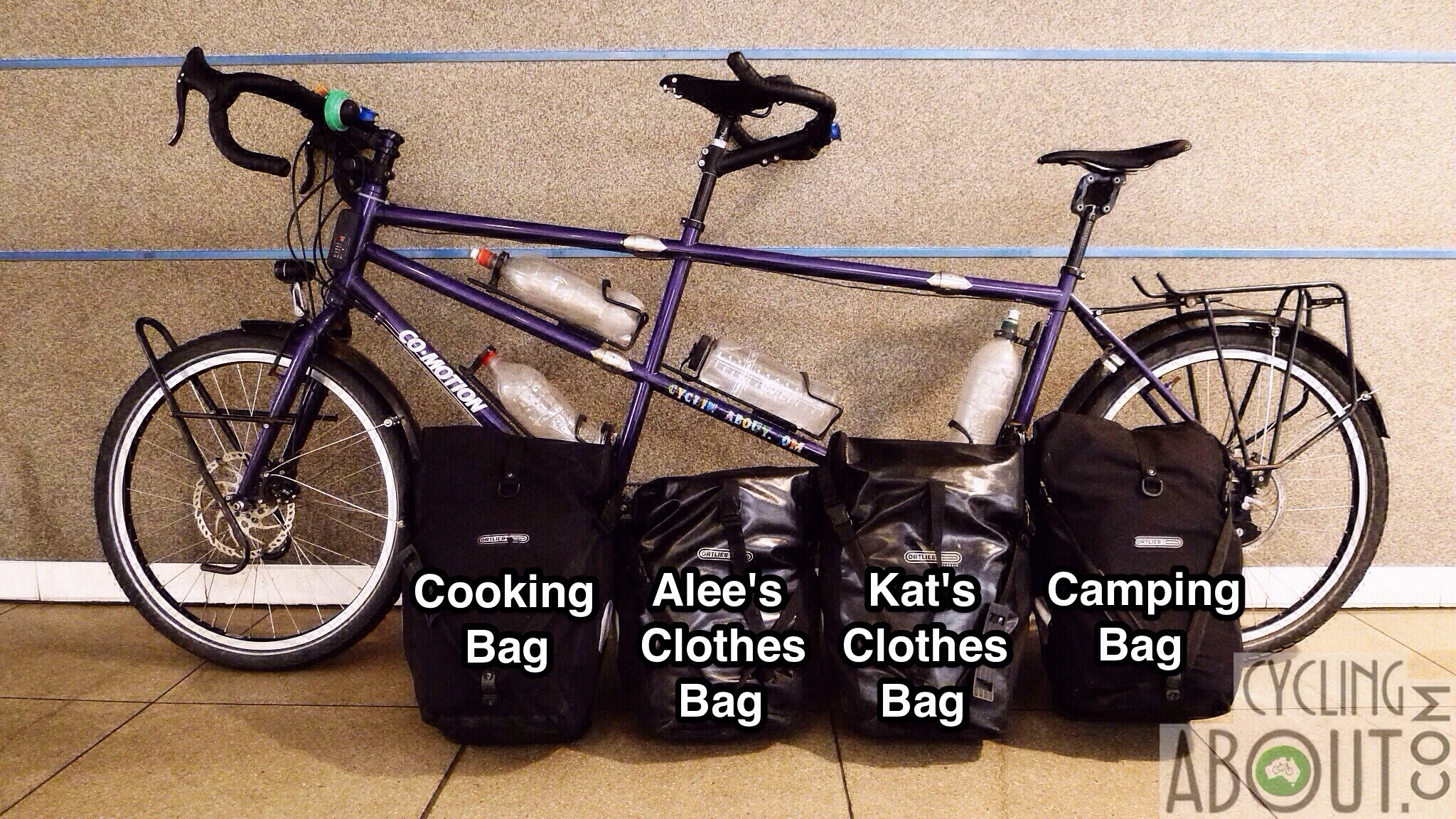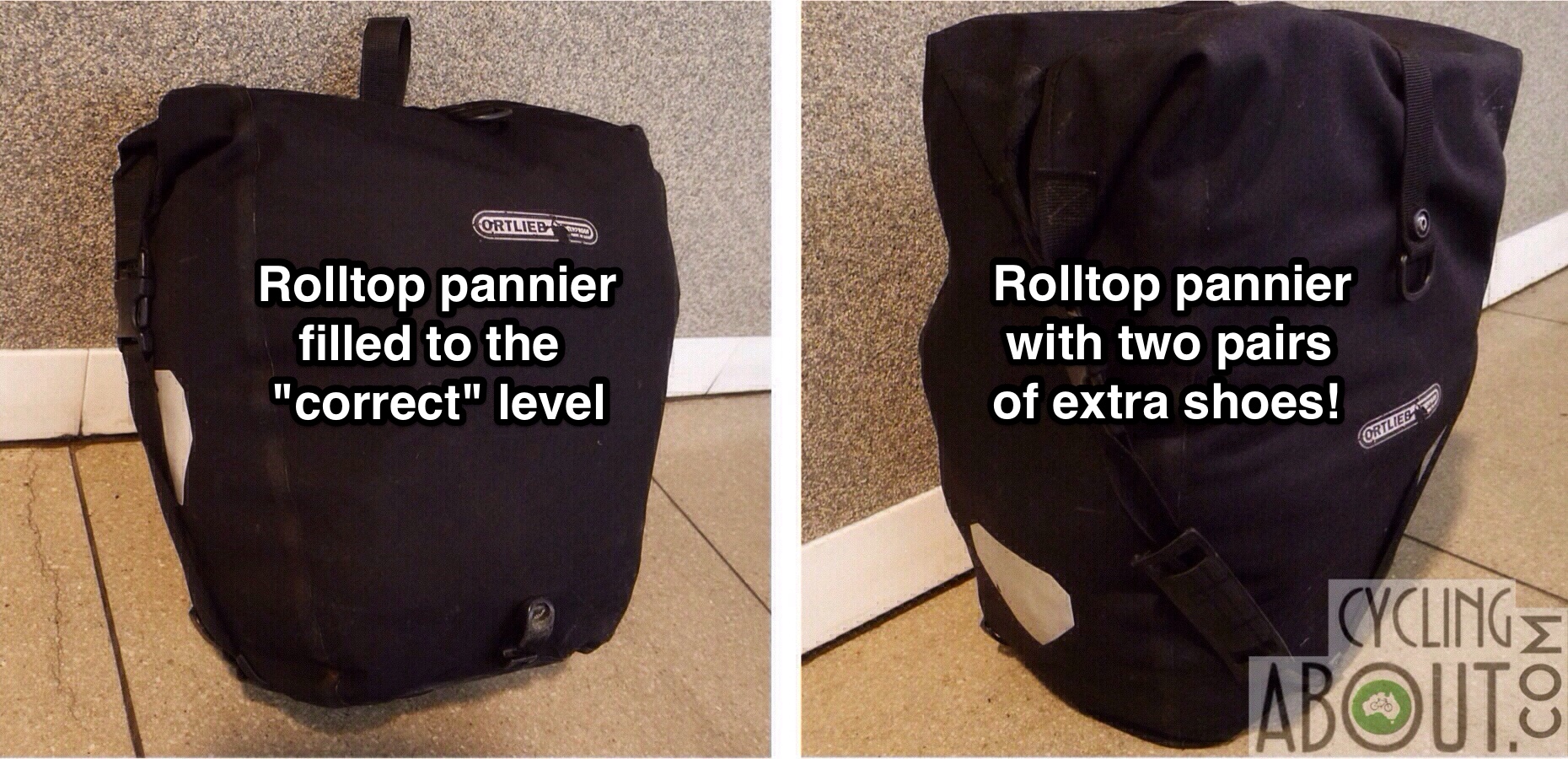Ok, so packing panniers isn’t exactly brain surgery – but sticking to these ‘rules’ has definitely made my touring life easier!
#1
My number one rule for packing panniers is to ALWAYS put your gear back where it came from. This makes life so much easier, especially during times when it’s hard, like in the rain, cold, or after a long day of headwinds. When you have a packing system in place, you’ll also guarantee the efficient use of your panniers, every time!

#2
My number two rule is to pack your bags based on category. For example, on my two-year adventure we had a cooking pannier, camping pannier and a clothes/toiletries pannier each. Having categorised panniers makes sense because you often need to access multiple items that are used together.
Cooking bag contents could include: Stove, pots, kitchen gear, fuel bottle, tea towel, chopping board.
Camping bag contents could include: Tent, sleeping mats, sleeping bags, pillows, electronics.
Clothes bag contents could include: Clothes, toiletries, shoes, hat, medical gear.
Handlebar / Rackpack contents: The handlebar bag stored things we needed easy access to – most of the time that meant passports, money, sunscreen, gloves, buffs, maps, paperwork and hand sanitiser. The rackpack held food and some of our bulkier items like tent poles, rain jackets, iPads, musettes and spare plastic bags.

#3
My number three rule for successful packing is to assign a couple of compression sacks to some bag management duties. Part of the reason we rode around the world with SO MUCH STUFF and only four panniers is that we used compression sacks to squeeze our gear in. We compressed our tent, sleeping bags, clothes and down jackets.
#4
My number four rule is to pack your weight low in your panniers. That is, heavier items at the bottom of the bags wherever possible. Lowering your centre of gravity will improve the handling of your bike.
#5
My number five rule is to balance your weight. Ideally both your left and right sides of your bike will be equally weighted.
#6
My number six rule is to keep the things you need during the day at the top of your panniers. For me this includes food, tools, rain gear, sunscreen, hats and extra layers.
Bonus Tip
Rolltop bags such as the Ortlieb BackRoller Plus can fit way more gear than any other pannier design. I can fit two pairs of shoes in after I’ve already filled my panniers to the ‘correct’ level.



Hi, we are planning to do bicycle trip in central and south America. probably you can help me with this one question: we are concern of the safety of our paneer babs. If we just stop in a town for a short groceryshopping or just sightseeing and wanna to left the bike for example in front of the groceryshop or probably in front of gasstation, do you take all of your pannierbag? or are there any sollutions? thanks for your help. Ratna
Hi Ratna. We never took our pannier bags off during the day! You will have a good idea when it is safe to leave your bikes alone – just make sure to bring your valuables like passport, cash, cards and cameras wherever you go. If it seems like someone might get curious with your things, one of you should stay with the bikes while the other goes into the shop. Alee
Wow, did you really fit 2 sleeping bags, 2 sleeping pads, 2 pillows and a tent inside one pannier?
With the exception of the tent poles – yes!
Where do the tools and spares go? And don’t you end up with an unequal distribution of weight then?
I normally try to balance things by placing tools on one side and electronics on the other (chargers and stuff). then I put clothes on top of the electronics (both of us) and camping gear with the tools, roughly. I usually end up with some free space on the camping gear/tools side which we use for shoes and/or dirty clothes. The tent stays out though, on top of the panniers, as do the sleeping mats.
The tools and spares were used to balance out the weight. On the multi-year tour the tools were kept in the camping pannier and the spare tyres were in the cooking pannier. Sounds like you’ve got a good strategy there.